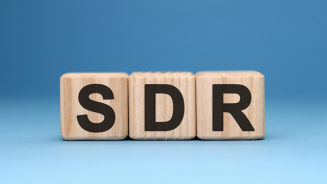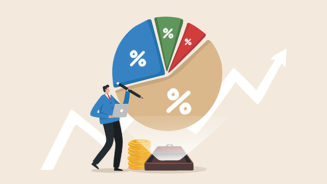Nine strategic bond funds for all situations
By Kristen McGachey, 23 May 16
The ‘go anywhere’ approach of strategic bond funds has been a big hit with investors in recent years and big calls across the fixed-income spectrum are now having a huge influence on returns.

For a number of years, investors have been challenging the traditions of portfolio construction that equities deliver capital growth, bonds provide income and price stability, and cash preserves capital.
The mass of unconventional monetary and fiscal policy from central banks across the world post the global financial crisis has changed the normal expected paths of return, risk and correlation of each of these traditional asset classes.
This unprecedented action has fuelled an equity bull market, suppressed government bond yields and narrowed credit spreads, as well as having driven interest rates to long-term historical lows.
Most importantly, the dividend yield on UK equities remains greater than gilts, which is usually a supportive factor. Caution is required if you conclude from this that bonds are expensive and equities are cheap. The answer lies somewhere between the two, and while equities can continue to deliver growth, it will be modest.
A question of income
The key question investors are continuing to grapple with is whether bonds, particularly in western economies, can continue to provide income, price stability and cash reserve capital.
In the UK, 10-year gilt yields are currently below 1.5% and UK base rates rooted to 0.5%. If starting yields today are 1% to 2% then the total return per annum will essentially fall into this region. Hardly an exciting or particularly attractive return for investors, which may even result in a negative real return with the Bank of England’s mandate to deliver inflation at 2%.
With the UK bond income well potentially running dry, fund investors have been prepared to look at higher-yielding and overseas bonds, and in doing so accepting the potential instability of credit and currency risk.
Navigating the universe
This is a tricky environment for bond fund investors to navigate both in the UK and elsewhere in the global bond fund universe, hence the greater fund inflows into non-traditional asset classes offering an alternative income, and also into alternative strategies managing traditional asset classes. The latter would include those funds listed in the Investment Association (IA) Sterling Strategic Bond sector.
The IA defines the sector as funds that invest at least 80% of their assets in sterling-denominated (or hedged back to sterling) fixed-interest securities. This excludes convertibles, preference shares and permanent interest bearing shares.
This definition provides a high degree of flexibility for funds and, as a result, there is a large range of investment approaches and styles within the sector.
As at the end of February 2016, according to IA figures, fixed-interest funds under management were valued at £125.7bn and the £29bn Sterling Strategic Bond sector was ranked the second largest after Sterling Corporate Bonds (£52.7bn).
Shunning the expensive
The sector continues to gain inflows for fund investors attracted to the loose definition, which gives fund managers the flexibility to navigate a market environment that is uncertain about the short-term direction of growth, inflation and interest rates.
Given the wider remit it would be a mistake to think that one strategic bond fund is necessarily similar to another; it simply isn’t. The dispersion of returns in the sector over the past three years is proof of this. The best-performing fund had risen by 16.8%, the sector average is up by 10.6%, while the worst fund declined 2.6%.
There has been a noticeable shift away from traditional bond funds to more flexible mandates, and this seems to be a long-term trend rather than a fashion.
This has led to a fund sector that is populated by a small number of very large funds. Liquidity risk is the biggest danger for these mammoth funds, but this exists for all funds investing in interest rate sensitive securities at this stage of the cycle.
Tags: Bonds





